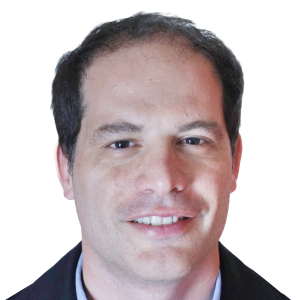How Dallas survived JFK


Roula Khalaf, Editor of the FT, selects her favourite stories in this weekly newsletter.
After John F Kennedy was murdered on November 22 1963, Dallas became known as “the city of hate”. Its citizens were charged with creating a fervid rightist atmosphere in which Lee Harvey Oswald felt moved to shoot the president. Mike Rawlings, the city’s current mayor, told me: “There are stories of people going to places and almost being embarrassed to be from Dallas back in the 1960s, early 1970s.”
I found Rawlings sneaking a catnap at the New Cities Summit in São Paulo in June. The man who came to Dallas in 1976 with $200 in his pocket and made it to president of Pizza Hut was taking the briefest break from his usual activity: plugging Dallas. But how does any city incorporate a global trauma into its image? It’s taken Dallas 50 years to learn to deal with the murder.
Many Americans in 1963 couldn’t accept that a lone loser like Oswald had changed history. Consequently, they blamed larger entities. Conspiracy theorists accused the Central Intelligence Agency or Cuban exiles. Others blamed Dallas itself.
To quote Texas Monthly magazine: “The tragedy seemed to seal the perception of our state as being populated by a bunch of trigger-happy yeehaws who were beyond forgiveness.” Because few outsiders knew anything else about Dallas, the assassination branded the city. In truth, Dallas in 1963 did house some noisy rightist Kennedy-haters. Days before he arrived, “Wanted for Treason” leaflets featuring him appeared around town. And on the day, the Dallas Morning News published an ominously black-bordered full-page ad portraying him as a communist fellow-traveller. Reading it, Kennedy told his wife: “We’re heading into nut country today.”
After the murder, many diagnosed citywide hate. Bill Minutaglio, co-author of the new book Dallas 1963, says: “Nothing like this could have happened, but in Dallas.”
Yet blaming Dallas is illogical. Oswald was a Marxist nut, not a rightwing nut. And as Rawlings says, “Dallas loves its presidents.” Nearly one in three Dallasites turned out to see Kennedy, with barely an unfriendly sign on display. In the motorcade, the Texan governor’s wife, Nellie Connally, gushed, “Mr President, you can’t say Dallas doesn’t love you.” She was mostly right. Assassinations, Americans soon learnt, can happen anywhere. Cities don’t kill people. People kill people.
After 1963, says Rawlings, many Dallasites “wanted to move on as quickly as possible”. They rarely discussed the murder. Gradually, though, the mood changed. Rawlings says: “In the 1980s, people started to think: we are the home of a very important moment in history. Not only because of the assassination, but that seemed to be the dawning of a new era. After that came the Vietnam war, civil rights came to its fruition, women’s liberation. There was a new world, a door that somehow people walked through. Citizens said, ‘We’ve got to make sure we capture the truth of this history.’”
Oswald had shot from the sixth floor of the Texas School Book Depository. Plans to tear the building down were dropped. In 1989 it became a museum. Rawlings says, “For many years it was the one site that if someone visited you and said, ‘What do you want to do in the afternoon?’ you would say, ‘Want to go down to the Sixth Floor Museum?’”
He adds: “I don’t think we should be defensive or try to remove anything. It is what it is. That part of history will always be in Dallas.” Even Oswald, says Rawlings, belongs in the city’s history. He attended elementary school in Dallas, and returned in 1962 after his Soviet jaunt.
The city can face these facts today largely because the assassination’s stigma has faded. Rawlings says: “With time that changed, with the arrival of the Dallas Cowboys [football team] and different things that Dallas started to become known for. It became a secondary branding for the city.”
…
On Friday, the world will be watching Dallas. Rawlings says: “Before I became mayor, I realised that the one moment people were going to pay more attention to Dallas while I was mayor was November 22 2013. People look to 50th anniversaries. They remember where they were, and you retell the story.” Friday’s commemoration will be sober and “very untouristy”, he adds. “I’m very shy about trying to do too much on this day. If I can stand up straight, salute the president and move on, I think Dallas has done what’s right. Our brand won’t be made because of this.”
Where was Rawlings on November 22 1963? “In elementary school in Leawood, Kansas. They moved us to the gymnasium, and I remember sitting Indian-style on the floor when the principal told us, and we were sent home. My mother was a teacher, and before she passed away she gave me a stack of letters that she had had her elementary-school grade write about their reflections on that weekend. It was marvellous. Just a bunch of kids in a random school in Kansas talking about this shows the depth and breadth of this moment in people’s lives.”
simon.kuper@ft.com; Twitter @KuperSimon
See Simon Schama on JFK in Life & Arts
Comments